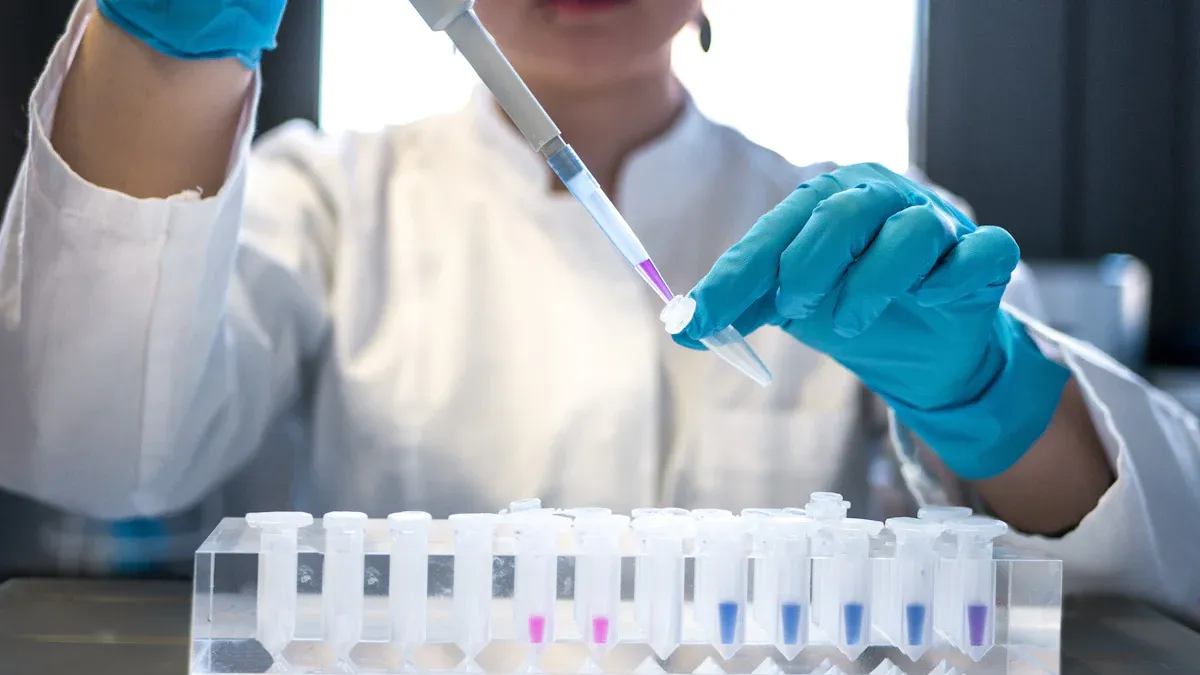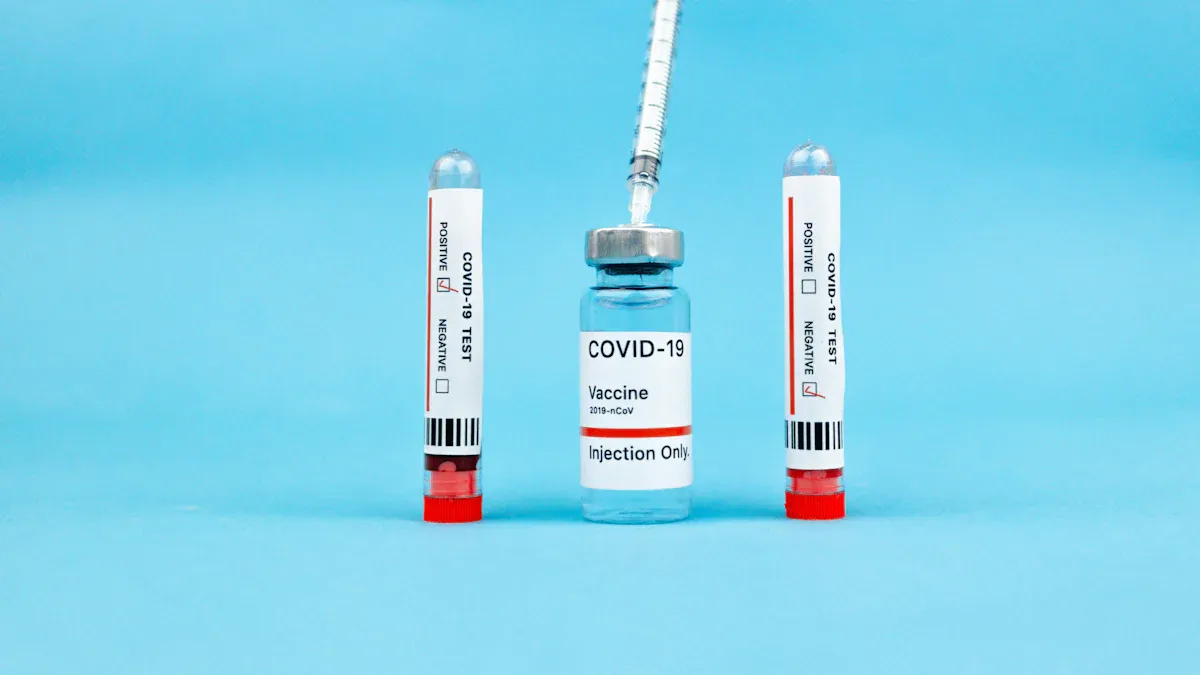
Freeze drying has revolutionized vaccine production by enhancing stability, extending shelf life, and simplifying distribution. This process, also known as vaccine lyophilization, enables vaccines to maintain efficacy under less stringent storage conditions. Singapore pharma has embraced this innovation, driving advancements that improve global access to life-saving immunizations while addressing cold chain challenges.
Key Takeaways
- Freeze drying helps vaccines last longer and stay effective.
- It makes transport easier since vaccines can be kept at room temperature.
- Singapore’s vaccine freeze-drying methods lead the world, helping more people get vaccines.
Vaccine Lyophilization: Enhancing Stability and Distribution

The Process of Freeze Drying in Vaccine Production
Freeze drying, or lyophilization, is a meticulous process that transforms liquid vaccines into a stable, powdered form. This involves three primary stages: freezing, sublimation, and desorption. During freezing, the vaccine solution is cooled to sub-zero temperatures, solidifying its components. Sublimation follows, where ice crystals are removed under vacuum conditions, leaving behind a dry matrix. Finally, desorption eliminates residual moisture, ensuring the vaccine’s stability.
Technical advancements have refined this process. For instance, lyoprotectants like sucrose and trehalose safeguard the structural integrity of vaccine nanoparticles during drying. Experimental metrics reveal that lyophilization durations range from 40 to 100 hours, with rehydrated vaccines demonstrating rapid recovery and preserved immunogenicity. These innovations underscore the precision required to maintain vaccine efficacy throughout production.
Benefits of Lyophilization for Vaccine Longevity
Lyophilization significantly extends vaccine shelf life by enhancing stability under varied storage conditions. Research shows that freeze-dried mRNA-LNPs retain their immunogenicity and structural integrity for up to 24 weeks at temperatures ranging from 4 °C to 25 °C. This longevity reduces the frequency of vaccine replacement, lowering costs and improving accessibility.
Optimized drying techniques further bolster vaccine durability. Studies highlight that efficient lyophilization methods can reduce process times to 8–18 hours, minimizing energy consumption while preserving nanoparticle encapsulation efficiency. These advancements ensure vaccines remain effective during long-term storage and transportation.
Addressing Cold Chain Challenges with Freeze Drying
Cold chain logistics pose significant hurdles in vaccine distribution, particularly in regions with limited refrigeration infrastructure. Freeze drying mitigates these challenges by enabling vaccines to be stored at ambient temperatures. This eliminates the risk of degradation caused by sub-zero exposure and reduces reliance on costly refrigeration systems.
Additional measures, such as incorporating excipients like glycerin and polyethylene glycol, enhance vaccine stability and potency. These innovations prevent wastage and ensure consistent immunological efficacy, even in challenging environments. By addressing cold chain limitations, vaccine lyophilization facilitates broader access to immunizations worldwide.
Success Story 1: Revolutionizing mRNA Vaccine Stability
Singapore’s mRNA Vaccine Development Initiative
Singapore has emerged as a leader in mRNA vaccine development, leveraging cutting-edge technologies to address global health challenges. The nation’s research institutions and biotech companies have focused on creating vaccines that are not only effective but also practical for worldwide distribution. Recognizing the limitations of traditional cold chain systems, Singapore prioritized the integration of freeze drying techniques into vaccine production. This approach aimed to enhance the stability and accessibility of mRNA vaccines, particularly in regions with limited refrigeration infrastructure.
Role of Freeze Drying in Stabilizing mRNA Vaccines
Freeze drying has played a pivotal role in stabilizing mRNA vaccines in Singapore. By transforming liquid formulations into a dry, stable powder, this process has significantly extended the shelf life of mRNA-lipid nanoparticle (LNP) vaccines. Studies reveal that lyophilized mRNA-LNPs maintain high antigenicity against SARS-CoV-2 and remain stable at room temperature for extended periods. This stability reduces the dependency on cold storage, making vaccine distribution more efficient and cost-effective.
Optimization of the lyophilization process has further enhanced vaccine performance. Researchers in Singapore have carefully selected lyoprotectants to preserve the structural integrity of mRNA during drying. Despite minor challenges, such as potential mechanical stress on mRNA-LNPs, the freeze-dried vaccines demonstrated comparable immunogenicity to their liquid counterparts. These advancements underscore the transformative potential of vaccine lyophilization in stabilizing mRNA vaccines.
Outcomes and Contributions to Global Vaccine Innovation
Singapore’s efforts in mRNA vaccine stabilization have yielded significant global benefits. Lyophilized mRNA vaccines now offer a practical solution for regions with limited cold chain infrastructure. The ability to store these vaccines at ambient temperatures has improved accessibility and reduced wastage. Additionally, the research conducted in Singapore has set a benchmark for optimizing freeze drying techniques, inspiring similar innovations worldwide. By addressing critical challenges in vaccine distribution, Singapore has solidified its position as a pioneer in global vaccine innovation.
Success Story 2: Transforming Pediatric Vaccine Distribution
Challenges in Pediatric Vaccine Accessibility
Pediatric vaccines face significant distribution challenges, particularly in regions with limited cold chain infrastructure. Many vaccines, such as hepatitis B and pentavalent vaccines, contain aluminum-salt adjuvants that are highly sensitive to freezing. Exposure to sub-zero temperatures can cause particle agglomeration, leading to potency loss and rendering the vaccines ineffective. This issue has resulted in substantial vaccine wastage, especially in remote areas where refrigeration is unreliable.
The VIPS Phase II survey highlighted freeze sensitivity as a critical barrier to vaccine accessibility. Pediatric vaccines, which are essential for preventing diseases like diphtheria, tetanus, and pertussis, are particularly vulnerable. Addressing these challenges requires innovative solutions to ensure vaccine stability during transportation and storage.
Singapore’s Freeze Drying Breakthrough for Pediatric Vaccines
Singapore has pioneered the use of vaccine lyophilization to overcome the limitations of traditional cold chain systems. Researchers developed freeze-dried formulations for pediatric vaccines, transforming them into stable powders that can be stored at room temperature. This innovation eliminates the risk of freeze damage and extends the shelf life of vaccines, making them more accessible to underserved populations.
For example, a freeze-dried polio vaccine developed by researchers demonstrated remarkable stability. It retained its potency after being stored at room temperature for four weeks and provided full protection upon rehydration. This breakthrough showcases the potential of freeze drying to revolutionize pediatric vaccine distribution, particularly in remote and resource-limited settings.
Public Health Benefits and Distribution Improvements
The adoption of freeze-drying technology has significantly improved pediatric vaccine distribution. By eliminating the need for constant refrigeration, this approach reduces logistical costs and minimizes vaccine wastage. Stabilizing agents like glycerin and polyethylene glycol further enhance vaccine durability, ensuring consistent immunological efficacy even in challenging environments.
| Challenge | Description |
|---|---|
| Freeze-Sensitivity | Vaccines with aluminum-salt adjuvants lose potency when exposed to freezing. |
| Development Stage | Freeze-damage resistant formulations are still in early development stages. |
| Potential Solutions | Excipients like glycerin stabilize vaccines against freeze damage. |
Singapore’s advancements in vaccine lyophilization have set a new standard for global health initiatives. By addressing cold chain challenges, these innovations ensure that life-saving immunizations reach children in need, regardless of geographic or infrastructural barriers.
Success Story 3: Strengthening Pandemic Preparedness

Singapore’s Leadership in Pandemic Vaccine Development
Singapore has demonstrated exceptional leadership in pandemic vaccine development, setting benchmarks for global health initiatives. The nation’s proactive approach during the COVID-19 pandemic showcased its ability to adapt and innovate under pressure. With over 92% of its population receiving two vaccine doses and 71% completing a third dose, Singapore achieved one of the highest vaccination rates worldwide. Among individuals aged 60 and above, 95% completed their primary vaccination series, reflecting the country’s commitment to protecting vulnerable populations. Furthermore, Singapore maintained one of the lowest COVID-19 morbidity and mortality rates globally, at just 0.05%. These achievements underscore the nation’s dedication to public health and its capacity to lead in vaccine innovation.
Freeze Drying for Rapid Vaccine Deployment
Freeze drying has emerged as a cornerstone of Singapore’s pandemic preparedness strategy. This process enhances vaccine stability, particularly for mRNA-lipid nanoparticle (LNP) formulations, enabling storage at ambient temperatures. Lyophilized vaccines can be rehydrated quickly, ensuring immediate availability during health crises. Despite challenges in preserving mRNA integrity during freeze drying, Singapore’s researchers have optimized techniques to maintain biological activity. These advancements have facilitated rapid vaccine deployment, reducing delays in immunization efforts. By leveraging vaccine lyophilization, Singapore has addressed critical bottlenecks in pandemic response, ensuring efficient and widespread vaccine distribution.
Long-Term Impacts on Global Health Security
The long-term benefits of vaccine lyophilization extend beyond immediate pandemic responses. Lyophilized mRNA vaccines retain their stability and immunogenicity during extended storage, even under varying temperature conditions. This durability ensures vaccine availability in regions with limited cold chain infrastructure, enhancing global health security. The freeze-drying equipment market, valued at USD 2.08 billion in 2023, is projected to grow to USD 3.83 billion by 2032, reflecting the increasing reliance on this technology. Singapore’s advancements in vaccine lyophilization have set a precedent for sustainable pandemic preparedness, ensuring that future health crises can be managed effectively.
Vaccine lyophilization has proven essential in improving vaccine stability, extending shelf life, and simplifying distribution. Singapore’s innovative use of freeze drying technology has set a global benchmark in vaccine production. These success stories demonstrate how Singapore’s advancements have strengthened global health systems and enhanced access to life-saving immunizations worldwide.
FAQ
What is freeze drying, and why is it important in vaccine production?
Freeze drying, or lyophilization, removes water from vaccines, transforming them into a stable powder. This process enhances shelf life, stability, and distribution efficiency, especially in challenging environments.
How does freeze drying address cold chain challenges?
Freeze drying eliminates the need for constant refrigeration by stabilizing vaccines at ambient temperatures. This reduces logistical costs and ensures vaccine efficacy in regions with limited infrastructure.
Post time: Mar-31-2025





